#franz nopcsa
Explore tagged Tumblr posts
Text
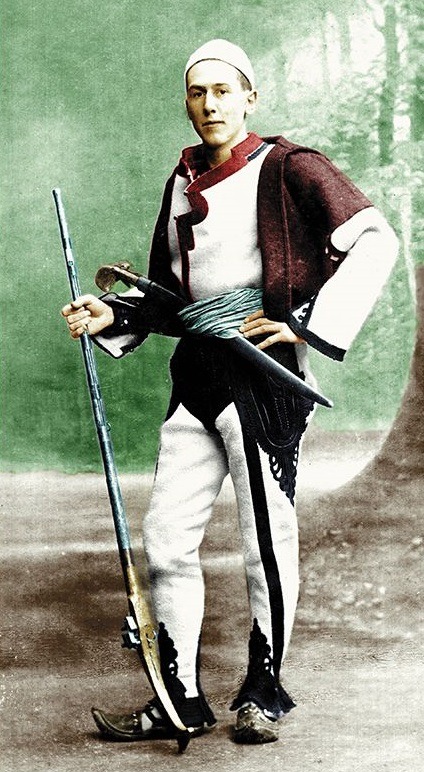
Did you known that the first person to hijack a plane was a gay palaeontologist?
When the Romanian army marched into Transylvania at the end of WWI, Franz Nopcsa - a Hungarian aristocrat - made the decision to flee. He didn’t have the necessary papers to leave the country, but he was able to use forged papers to get him a chartered flight to the border. Halfway there, he pointed a gun at the pilot, and demanded he fly all the way to Vienna, where they landed safely. The Romanians invited Franz to return in 1920 to work for the Geological Institute in Bucharest.
Learn more
173 notes
·
View notes
Video
youtube
The Fauna of Hateg Island
Hateg Island Appreciation Post!
It’s an ancient island in what is now Transylvania, in Romania.
As noted in the video, it was about the size of Hispaniola (home of Haiti and the Dominican Republic, and pirate base of old). During the Late Cretaceous, it was home to a variety of small dinosaurs (a classic case of “insular dwarfism”, animals growing smaller due to limited space/resources, ie living on an island). And also home to some terrifyingly large pterosaurs.
The man who first researched it, Franz Nopcsa von Felso-Szilvas, is also a fascinating character. Per Wikipedia, he was a Hungarian scientist and nobleman, he supported Albanian nationalists against the Ottoman Empire, was a spy for the Austro-Hungarian Empire, and after Albania gained independence, tried unsuccessfully to become its first king. He was once taken hostage by bandits, and reportedly holds the dubious distinction of being the first person in history to hijack an aircraft.
He was also a gay man, and had a long-running relationship with his Albanian secretary, Bajazid Elmaz Doda. His story ended horribly, however- he was left destitute by the fall of the Austro-Hungary empire at the end of World War I, sold his fossil collection to the Natural History Museum in London to pay off debts, and eventually committed murder-suicide, drugging and shooting Doda before shooting himself.
#youtube#Hateg Island#Dinosaurs#Fossils#Romania#Transylvania#Pterosaurs#Evolution#Insular Dwarfism#Science#History#Albania#World War I#Franz Nopcsa#Espionage#Queer History
0 notes
Text
A collection of all my self made Puppet History-inspired puppets I’ve created over the past two years:
• Wojtek the Bear
• Mystery Meat - The Kentucky Meat Shower
• Bottle - The Downfall of Yugoslavia/The Đorđe Martinović incident
• The Space Shuttle Challenger
• Fossilised skull of a Telmatosaurus - Franz Nopcsa Von Felsó-Szilvás


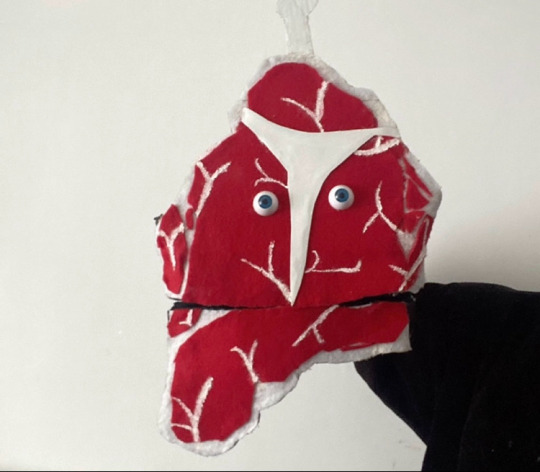

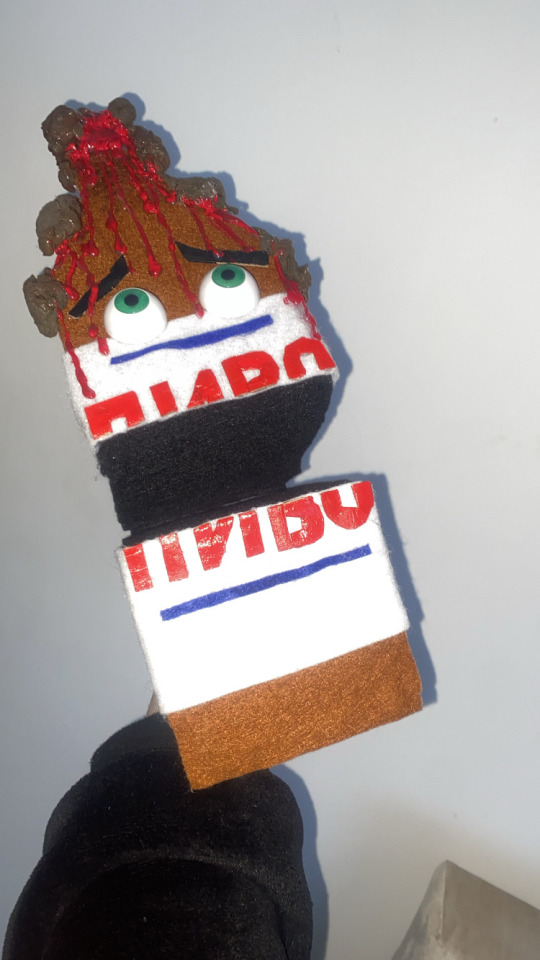

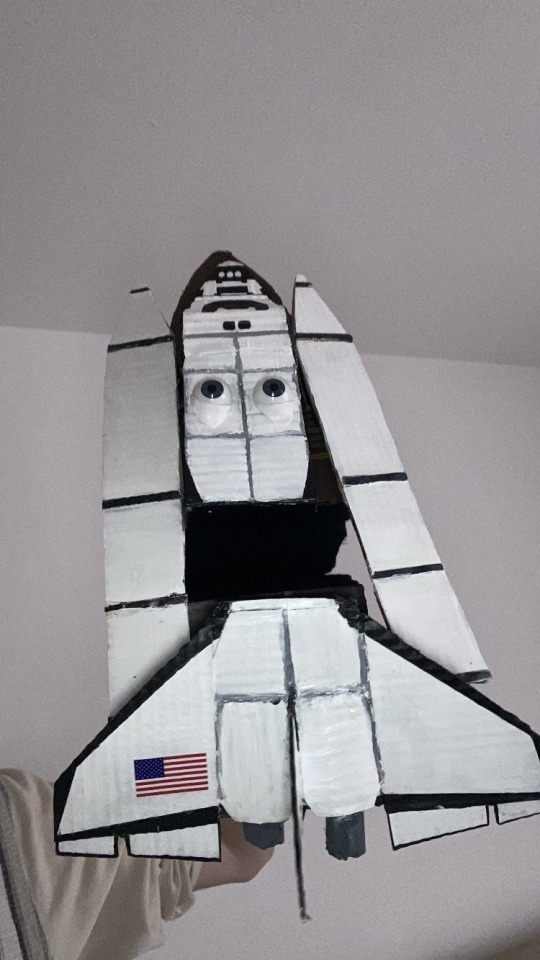
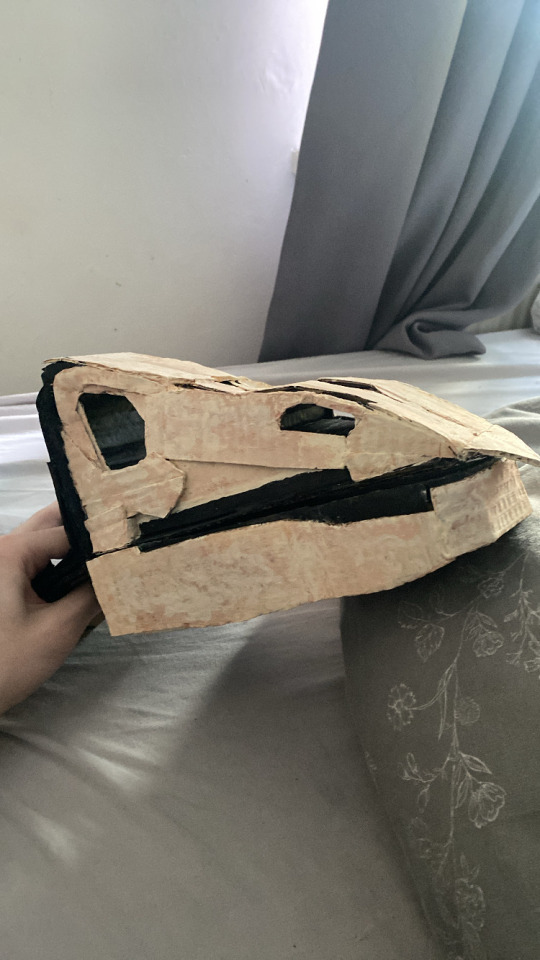
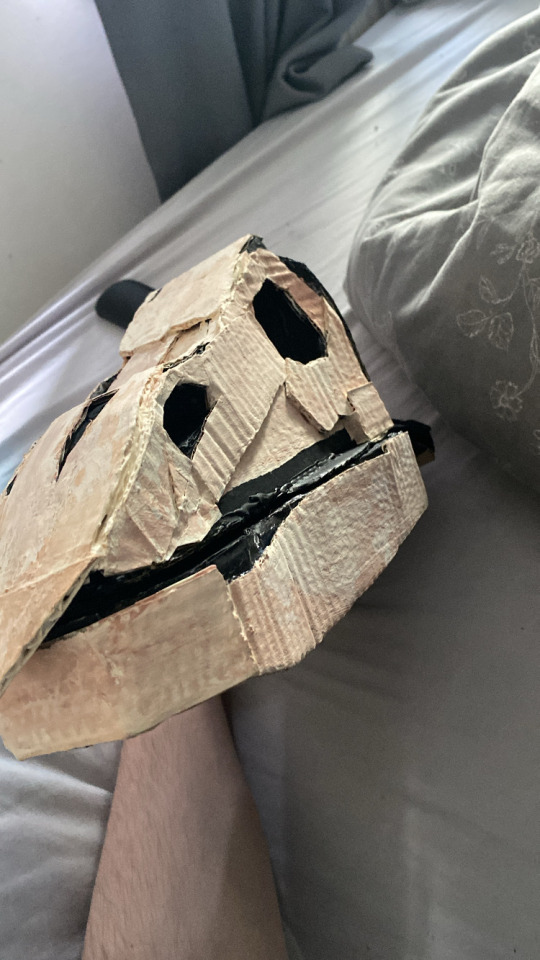
19 notes
·
View notes
Text
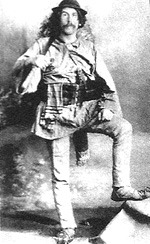
Baron Franz Nopsca:
Linguist, WW1 spy, Austro-Hungarian Nobleman, Seducer of wealthy women, Self-taught Paleontologist, gun runner, guerilla fighter, motorcycle enthusiast, one time claimant to the Albanian throne, first in history to hijack a plane and well known arrogant trust fund baby, I present the Shepard Prince of Transylvania, namer of turtles and lover of men, The Baron Franz Nopcsa von Felső-Szilvás.
Born in Deva Transylvania (modern Romania) to an aristocratic family of Romanian and Hungarian origin.
Franz was the son of Baron Elek Nopsca, a member of parliament in the Hungarian government.
Franz developed a love of paleontology in his teens after his sister discovered bones on the family estate. It was in this field where he would meet the love of his life, Bajazid Elmaz Doda.
The two men would travel to Doda's homeland of Alabania to study fossils and perhaps take part in local dissent against the Ottoman overlords of the region.
After being rescued from a local warlord by his boyfriend's father, Nopsca turned to espionage, posing as a Shepard to spy during both the Balkan Wars and the First World War.
In 1919, Nopsca became the first person in history to hijack a plane when he fled a communist uprising in Hungary.
He and Doda then went on to tour Europe on a motorcycle, studying fossils and working as itinerant paleontologists. It was here that Nopsca would name a species of turtles after his boyfriends ass.
This story does not have a happy ending however, despite all its swashbuckling adventures and thrills.
Pressed financially and depossessed of his holdings in Transylvania, Nopsca turned to suicide in 1933 after drugging and killing Doda with a handgun.
#ww1#edwardian#first world war#1910s#wwi#edwardian era#history#lgbt history#queer history#austro hungarian empire#austria hungary#albania#old post remaster
11 notes
·
View notes
Text
TIL that the man who proposed the theory of insular dwarfism, Baron Franz Nopcsa von Felső-Szilvás, was also the first person ever to hijack a plane.
16 notes
·
View notes
Text
Ora
The Ora is an Albanian figure that every human possesses from birth, associated with human destiny and fate. Often depicted as three female deities, the Ora “maintain the order of the universe and enforce its laws” – “organising the appearance of humankind.”

The Northern Albanian Ora, along with the Zana, can be found within the folk beliefs and oral epics of the Gheg Albanians. Folk beliefs of the Southern Tosk Albanians reveal similar Albanian mythological figures of fate and destiny, the Mirai and Fatia.
The Ora reside towards the north of the Drin River in Northern Albania. Within Central Albania it was believed that the Ora were present everywhere, “listening to people’s blessings and curses, which they would then aim to quickly fulfil”. Outside of Central Albania Oras live in forests and mountains, residing in streams, lakes, and caves. Baron Franz Nopcsa related the term ‘Ora’ to the ancient Greek Oreads, “nymphs of the mountains”.
Extract from Songs of the Frontier Warriors (Mujo’s Ora’s), translated by Robert Elsie –
As Slavic Warrior Paji Harambashi searches for Mujo within the mountain ranges, he encounters three snow-white Oras – Mujo’s protectors.
“And turning, set off for the high mountain meadows, But nowhere upon them was he to find Mujo. Anger and rage of the shkja took possession.There in the moonlight at the edge of a fountain Did he encounter the three snow-white oras. In the light of the moon did they seem to be playing.”
— "Mujo's Ora's", Songs of the Frontier Warriors.
Within Albanian folklore and poetry, the Ora is a protective spirit that every human possesses from birth. The Ora's appearance alters according to the personality and attributes of the human – “a white Ora for the brave and industrious, or a black Ora for the lazy or cowardly.”
In Northern Albania, the Oras are represented – similarly to the Southern Albanian Fatia – as a group of three mythological goddesses who gather in the night to perform the task of “determining the child’s fate at birth” and distribute their favours upon the child. The inhabitants of the Dukagjini Mountains believed that three types of Fates existed: “e Bardha (The White One) distributes good luck and wishes humans well, e Verdha (The Yellow One) distributes bad luck and casts evil spells, and e Zeza (The Black One) who decides death”.
Within Albanian folklore and poetry, Ora had the ability to take any form they pleased, including “birds, beasts, women, or serpents.”
In Northern Albania, Oras “often appear as serpents.” – similarly to the Southern Albanian deity Vitore. Both the Ora and Vitore are “widely represented as a serpent with golden horns who brings gold.” Albanian stories describe beliefs associated with the protective serpent Oras. The mythological cycle of the ‘deeds of Muyi’ reveal the Ora’s ability to provide the hero with supernatural powers and healing while in the form of a serpent.
From Albanian literature translated by Robert Elsie -
“Can you see that Ora, standing at my bedside?
She holds vigil over me day and night.
This serpent slithers over my wounds to heal them.
God bestowed it upon me to come to my assistance.“
— Robert Elsie
Within Albanian folklore it was believed every person was assigned an Ora at birth, for there were “as many Ora as there were humans”. Ora travel with their person and provide protection. The Ora – similar to the ancient Greek Moirai – attend the birth of each child, determining their destiny while providing their blessings upon the child; “organising the appearance of humankind”.
With the birth of each child many Oras gather in the night towards the cliffs to decide upon the qualities that child would receive. Albert Doja refers to the studies of Maximilian Lambertz, revealing that the faces of the Oras change depending on the degree of happiness they bestow upon the newborn child. “Should an Ora howl at a person, the threads of their fate would be cut”. Once an Ora has been assigned to a newborn its appearance would change based on the qualities of the child; a “white Ora for the brave, or a black Ora for the cowardly”.
As discussed by Robert Elsie; tales and legends within Albanian folklore and poetry reveal the fundamental theme of the struggle between good and evil, “a reflection of social values as we perceive them”. “Traditionally sung in the far north of Albania”, Albanian oral literature has preserved many archaic elements, revealing traces of Greco-Roman mythology within, including the mythical Ora.
Songs of the Frontier Warriors – described by Robert Elsie as one of “the best-known cycles of Albanian epic verse.” The earliest written account of the epic was in Northern Albania in the early twentieth century, by Franciscan priests located in the mountains.
Revealed are the tales and adventures of warrior Gjeto Basho Mujo and his brother Sokol as they travel through what is now Albania. A pronounced mythological component to the text is revealed, as the brothers engage with mystical creatures that help them throughout their journey – one of those creatures being the Ora.
Slavic warrior Paji Harambashi’s encounters three white oras, mystical creatures in the mountains “who revel and frolic” as he searches for Mujo. An Ora is made a victim by Paji as he clenches and crushes its arm. The three Ora then seek the help of Mujo to seek revenge on Paji.
Extract from Songs of the Frontier Warriors (Mujo’s Ora’s), translated by Robert Elsie -
“Oh oras, to whom do you render assistance?”
One then strolled near him and spoke to him, saying:
“The oras we are of the great earthly hero,
We give our aid to Gjeto Basho Mujo!”
Great was the rage that the shkja felt for Mujo!
Seizing the arm of one of the oras,
He clenched it and squeezed it and crushed it to pieces.”
— "Mujo's Ora's", Songs of the Frontier Warriors.
Mujo’s brother Halili sets out to search for the only one he wishes to marry, Tanusha - the daughter of the King in the Realm of the Christians. On his journey he encounters an Ora who assists him and guides him towards Tanusha.
Extract from Songs of the Frontier Warriors (The Marriage of Halili), translated by Robert Elsie –
“I’m on my way to the Realm of the Christians,
There to encounter one Vukë Harambashi.”
The mountain ora then burst into laughter,
The young man himself was perplexed and did wonder
What kind of being was standing before him.
The ora turned now and began to inform him, …
Vukë Harambashi you’ll never encounter
For the Realm of the Christians he’s long since departed,
But come over here, young man, in my direction…”
— "The Marriage of Halili", Songs of the Frontier Warriors.
On his journey, Mujo meets an Ora who tells him he must slay Slavic warrior Behuri. As Mujo and Behuri duel, the Ora intervenes guiding Mujo to distract Behuri and use the poison dagger which the Ora had hidden on Behuri, to slay him. With the Ora’s guidance Mujo slays his rival, revealing the Ora’s ability to provide aid and guidance to its allocated person when they are in need.
Extract from Songs of the Frontier Warriors (Mujo and Behuri), translated by Robert Elsie –
“ In flight an ora hastened to him …
'Oh look, the sun!' shout to Behuri,
And when he turns his head to see it,
Put your hand in his left pocket,
There you’ll find a poisoned dagger,
And if you skilfully manoeuvre,
The shkja will look at you no longer.”
— "Mujo and Behuri", Songs of the Frontier Warriors.
Zuku Bajraktar captures his mother’s secret lover, Slavic warrior Baloz Sedlija, as his prisoner. Afraid of Zuku’s strength, his mother offers to blind her son. Zuku, taunted and captured is blinded by his mother. “Wandering aimlessly in the mountains, the blind Zuku is met by an ora who restores his sights with some herbs and tells him to take vengeance”. At midnight, Zuku slays Slavic warrior Baloz Sedlija, and burns his mother to her death.
Extract from Songs of the Frontier Warriors (Zuku Bajraktar), translated by Robert Elsie –
“For my mother, she did blind me.
The oras turned to him, responding:
You must give your word of honour,
To take vengeance on your mother,
We’ll restore your eyesight to you,
And make your eyes as you once had them.”
— "Zuku Bajraktar", Songs of the Frontier Warriors.
Syri i Keq is “one of the curses of Albania”; the Evil Eye. Evil Oras and devils would appear at night and then vanish at the “first cock-crow two hours after midnight, as they were now powerless”. Throughout Albania people would wear many types of charms to ward off the evil oras and devils. Children may have a coin tied to their forehead, or blue glass beads could be attached to the hair of both children and horses. Edith Durham reports that the dried head of a snake, cut off with a large silver medjidieh (coin) is a “very good charm” against the Evil Eye. It would be wrapped with a silver medal of St. George, then blessed by a priest - providing protection against the evil Oras and devils when worn.
Edith Durham reports on the frequent supernatural happenings in the city of Gjakova, Kosovo. In the mountain side on the road to Prizren remains a cavern that travels “miles underground - some say even beneath the Drin”. A large abandoned ancient city remains within the cavern, with a bazar “stocked with all of the finest and best fruit, flesh, fish, and fair raiment”. Evil oras disguised as serpents would guard the cavern; for if any man were to touch the items within the ancient city, they would “devour him in the darkness”. Durham’s studies within Albania reveal that no man has ventured within the cavern for many years.
Albert Doja reveals beliefs about the protective ‘house snake’ throughout Albanian culture and superstitions. One must never disturb a snake, even if it’s found within a baby’s cradle as “it is the ora that belongs to the house and the baby”. As the Ora provided protection, their appearance as a serpent could also foretell unfortunate events. If you cross paths with a snake before sunrise or after sunset it “foretells the death of some of your relations.”
Within Albanian folklore, the role of the Ora tends to differ. The Ora are often described as good mythological figures that offer their protection and help, but in several tales are depicted as negative and dangerous creatures. Within Albania, people believed the Ora would protect them, while others believed the Ora were dangerous creates with evil purposes. Durham reports that supernatural happenings within Albania would act as a caution, with many refusing to travel anywhere near areas believed to be cursed and/or protected by the Ora.
6 notes
·
View notes
Text
A gay, titled, dinosaur hunter. Amazing🎉 No one is doing it like Baron Franz Nopcsa von Felső-Szilvás
0 notes
Text
Didn't that guy Franz Nopcsa von Felső-Szilvás say dinos were birds in the 1800s? Sorry if my history is a little rusty not sure when exactly he said that
What's most amazing about people who hate that birds are dinosaurs is that, without the discovery of birds being dinosaurs in the 1960s, none of y'all would have ever actually cared about dinosaurs
the history:
dino craze in 1800s. people thought, birds are very similar to these guys. Dollo fucked it up, made a bad theory, and people stopped thinking that
Early 1900s, dinosaurs deemed sluggish, stupid, pointless evolutionary failures. most people not really into dinosaurs anymore. this continues until
1960s: Deinonychus discovered. suddenly, dinosaurs interesting again: vibrant, lively, warm blooded animals. Also... birds might be dinosaurs?
from the 60s through the 70s, a slow buildup of dinosaur culture - both in crappy stop motion movies, but also in children's books and other media
80s cladistics revolution shows birds are living dinosaurs, though not without flaws. documentary after documentary is made, causing the major dinosaur boom of the late 80s and early 90s
the peak of this boom are the A&E and PBS documentaries, which both outright state birds are dinosaurs
cartoons like land before time and other dinosaur content keep coming out too, especially at the end of the 80s and the earliest 90s
the book jurassic park, referencing the birds are dinosaurs thing, is written in the late 80s. in the early 90s, is adapted into one of the greatest blockbusters of all time. now dinosaur interest is MAINSTREAM.
jurassic park isn't the start of the dinosaur boom, it is the apex
90s becomes the decade of dinosaurs, with tons of new discoveries, television shows, documentaries, and other programming
1996 first feathered "nonavian" dinosaur discovered. birds are dinosaurs is the closest thing we have to proven phylogenetic fact
1999 walking with dinosaurs premieres, revolutionizing the dinosaur-documentary genre.
early 2000s becomes the age of Period-Type Dino-Docu-Dramas
velociraptor is determined to have feathers
suddenly, dinosaur mania starts to die in the later 2000s
even though discoveries keep happening and we learn so much in the 2010s, the 2010s becomes a very regressive time - a sort of reactionary response to the birdification of dinosaurs and the dinosaurification of birds. the height of this is jurassic world
we may be in the middle of a dino-docu-drama revitilization thanks to prehistoric planet. stay tuned on that one
like, everyone was fine with the birdification of dinosaurs up and until they looked "feminine" on the outside, because of feathers.
It's just all such transparent misogyny and homophobia and people who react against feathered dinosaurs or birds being dinosaurs are just... so transparently parroting conservative talking points
Anyways, yeah. without birds are dinosaurs, you wouldn't have jurassic park. Sooooo
2K notes
·
View notes
Photo
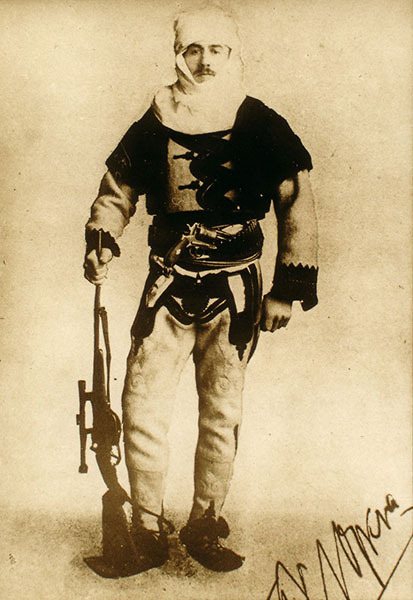




Franz Nopcsa – Scientist of the Day
Baron Franz Nopcsa, a Hungarian dinosaur expert, and an activist for political independence for Albania, was born May 3, 1877, in Transylvania, the central part of Romania.
read more...
#Franz Nopcsa#fossils#dinosaurs#histsci#histSTM#20th century#history of science#Ashworth#Scientist of the Day
35 notes
·
View notes
Text
If he's not naming a species of Cretaceous turtle after your backside, is he even worth it?
6 notes
·
View notes
Text
Baron Franz Nopcsa

An Austro-Hungarian nobleman who fought in the many Balkan conflicts leading up to WW1.
During the war he acted as a spy in Transylvania by disguising himself as a shephard.
He is likely the first ever person to hijack plane, proposed to make himself a sugar baby for an wealthy american heiress in order to fund more weapons for his men and had a extensive career in paleontology after an unsuccessfulbid to become king of Albania.
He would commit sucide shortly after killing his boyfriend in 1933.
31 notes
·
View notes
Photo

Franz Nopcsa von Felső-Szilvás (deceased)
Gender: Male
Sexuality: Gay
DOB: 3 May 1877
RIP: 25 April 1933
Ethnicity: White - Austrian/Hungarian
Occupation: Aristocrat, adventurer, scholar, geologist, paleontologist, albanologist
Note: Widely regarded as one of the founders of paleobiology, and first described the theory of insular dwarfism. He was also a specialist on Albanian studies and completed the first geological map of northern Albania.
#Franz Nopcsa#Franz Nopcsa von Felso Szilvas#Franz Nopcsa von Felső Szilvás#lgbt history#male#gay#1877#rip#historical#white#austrian#hungarian#aristocrat#scholar#teacher#geologist#scientist#first#popular#popular post
122 notes
·
View notes
Text
can u believe that the first man who ever hijacked an aircraft was a gay hungarian paleontologist ??? he was trying to escape from the hungarian soviet republic in 1919
#he also unearthed a dinosaur which he named magyarosaurus!!!#he did a lot of other cool stuff too! well i mean he kinda shot himself and his albanian lover bc he became depressed...... but . yknow#he was very cool in other things#nopcsa ferenc#franz nopcsa#bajazid elmaz doda#hungarian#zsófi rambles
14 notes
·
View notes
Photo

Island Weirdness #05 -- Magyarosaurus dacus
At the very end of the Cretaceous period, between about 72 and 66 million years ago, tectonic uplift from the start of the formation of the Alps created an island in the area corresponding to modern-day Romania.
Known as Hațeg Island, after the region where fossils of the native species were found, it was similar in size to Hispaniola and was surrounded by deeper waters than most of the other European archipelago islands.
Magyarosaurus here was was a titanosaur living on this island, and was one of the smallest known of all sauropod dinosaurs at just 6m long (19'8"). Much of that length would have been in its neck and tail, and its body was only actually about the size of a horse.
Like some other titanosaurs it had bony osteoderm armor along its back, although since only one isolated piece has been found the exact arrangement isn’t known.
Discovered by Franz Nopsca (the gay Transylvanian baron-paleobiologist-spy), in the early 1900s, it was one of the first dinosaurs proposed as an example of insular dwarfism. Later researchers disagreed with this hypothesis, suggesting instead that the Magyarosaurus fossils were just juveniles -- and it wasn’t until 2010 that studies of bone microstructure proved that these miniature sauropods really were fully grown adults.

#island weirdness 2019#science illustration#paleontology#paleoart#palaeoblr#magyarosaurus#titanosaur#sauropod#sauropodomorpha#dinosaur#art#insular dwarfism#franz nopcsa#hațeg island#speculative fluffiness#feather ALL the dinosaurs#island weirdness part 1
213 notes
·
View notes
Text
Of all the people who have ever studied dinosaurs, collected dinosaur bones, or even thought about dinosaurs in any serious way, there’s never been anybody quite like Franz Nopcsa von Felső-Szilvás.

Baron Franz Nopcsa von Felső-Szilvás, I should say, because this man was literally an aristocrat who dug up dinosaur bones. He seems like the invention of a mad novelist, a character so outlandish, so ridiculous, that he must be a trick of fiction. But he was very real – a flamboyant dandy and a tragic genuis, whose exploits hunting dinosaurs in Transylvania were brief respites from the insanity of the rest of his life. Dracula, in all seriousness, has nothing on the Dinosaur Baron.
Nopcsa was born in 1877 to a noble family in the gentle hills of Transylvania, in what is now Romania but was then on the fringes of the decaying Austro-Hungarian Empire. He spoke several languages at home, and they instilled within him an urge to wander. He also had urges of another kind, and when he was in his twenties, he became the lover of a Transylvanian count, an older man who regaled him with tales of a hidden kingdom of mountains to the south, where tribesmen wore dapper costumes, brandished long swords, and spoke in an indecipherable tongue. The local mountain men called their homeland Shqipёri. We know it today as Albania, but then it was a backwater on the southern edge of Europe, occupied for centuries by another great empire, the Ottoman.
The baron decided to check it out for himself. He headed south, through the borderlands that separated two empires, and when he arrived in Albania, he was welcomed with a gunshot, which sliced through his hat and narrowly missed his skull. Undeterred, he proceeded to cross much of the country on foot. He picked up the language, grew his hair long, started dressing like the natives, and earned the respect of the insular tribes nestled among the mountain peaks. But the tribesmen might not have been so welcoming if they’d known the truth: Nopcsa was a spy. He was being paid by the Austro-Hungarian government to provide intelligence on their Ottoman neighbors, a mission that became even more critical – and dangerous – as the empires collapsed and the map of Europe was redrawn in the hellfires of World War I.
That’s not to say that the baron was merely a mercenary. He was enamored of Albania – obsessed, really. He became one of Europe’s leading experts on Albanian culture and came to truly love its people – one in particular. Nopcsa fell for a young man from a sheepherding village in the high mountains. This man – Bajazid Elmaz Doda – nominally became Nopcsa���s secretary, but he was so much more, although it wasn’t spoken about so openly in those less accepting times. The two lovers would remain together for nearly three decades, enduring the leers of their peers, surviving the disintegration of their respective empires, traveling Europe by motorcycle (Nopcsa on the bike, Doda in the sidecar). Doda was by Nopcsa’s side when, in the chaos before the Great War, the baron plotted an insurgency of mountain men against the Turks – even smuggling in firearms to build an arsenal – and then later tried to install himself as king of Albania. Both schemes failed, so Nopcsa turned to other pursuits.
As it turned out, that would be dinosaurs.
In fact, Nopcsa became interested in dinosaurs before he knew anything of Albania, before he met Doda. When he was eighteen, his sister picked up a mangled skull on the family estate. The bones had turned to stone, and it didn’t look like any animal the young baron had ever seen scurrying or soaring across his stately grounds. He brought it with him when he started university in Vienna later that year, and upon showing it to one of his geology instructors, he was told to go find more. And so he did, obsessively exploring the fields, hills, and riverbeds of the land he would later inherit, on foot and horseback. Four years later, a blueblood in name but still just a student, he stood up in front of the learned men of the Austrian Academy of Sciences and announced what he had been up to and what he had found: a whole ecosystem of strange dinosaurs.
Nopcsa continued to collect Transylvanian dinosaurs for much of the rest of his life, taking breaks here and there when his services were needed in Albania. He studied them, too, and in doing so was one of the first people who made any attempts to grasp what dinosaurs were like as real animals, not simply bones to be classified. He had a genius when it came to interpreting fossils, and it didn’t take him very long to notice that something was odd about the bones he was finding on his estate. He could tell that they belonged to groups that were common in other parts of the world – a new species that he named Telmatosaurus was a duckbill, a long-necked critter called Magyarosaurus was a sauropod, and he also found the bones of armored dinosaurs. However, they were smaller than their mainland relatives, in some cases, astoundingly so; while its cousins were shaking the Earth with their thirty-ton frames in Brazil, Magyarosaurus was barely the size of a cow. At first Nopcsa thought the bones belonged to juveniles, but when he put them under microscope, he realized that they had the characteristic textures of adults. There was only one suitable explanation: the Transylvanian dinosaurs were miniatures.
This raised an obvious question: why were they so tiny? Nopcsa had an idea. Along with his expertise in espionage, linguistics, cultural anthropology, paleontology, motorbiking and general scheming, the baron was also a very good geologist. He mapped the rocks that held the dinosaur fossils and could tell that they had formed in rivers – thick sequences of sandstones and mudstones that were deposited either in the channels or off to the side when the rivers flooded. Underneath these rocks were other layers that came from the ocean – fine clays and shales bursting with microscopic plankton fossils. Tracing out the aerial extent of the river rocks and scrutinizing the contacts between the river and ocean layers, Nopcsa realized that his estate used t be part of an island, which emerged from the water some time during the latest Cretaceous. The mini-dinosaurs were living on a small bit of turf, probably around thirty thousand square miles (eighty thousand square kilometers) in area, about the size of Hispaniola.
Maybe, Nopcsa conjectured, the dinosaurs were small because of their island habitat. It stemmed from an idea that some biologist of the time were beginning to entertain, based on studies of modern species living on islands and the discovery of some strange small mammal fossils in the middle of the Mediterranean. This theory held that islands are akin to laboratories of evolution, where some of the normal rules that govern larger landmasses break down. Islands are remote, so it is always a little bit random as to which species can make their way out to them, being carried by the wind or rafting in on floating logs. There is less space on islands, so fewer resources, so some species may not be able to get so big. And, because islands are severed from the mainland, their plants and animals can evolve in splendid isolation, their DNA cut off from that of their continental cousins, each inbred island-living generation becoming more different, more peculiar over time. This, Nopcsa thought, is why his island-dwelling dinosaurs were so tiny, so funny looking.
Later research showed that Nopcsa was correct, and his dwarf dinosaurs are now regarded as a prime example of the „island effect” in action. Otherwise, fate wasn’t so kind to the baron. Austria-Hungary was on the losing side in the Great War, and Transylvania was handed over to one of he winners, Romania. Nopcsa lost his lands and his castle, and a senseless attempt to reclaim his estate ended with him getting pummeled by a gang of peasants and left for dead by the side of the road. With little money to support his lavish lifestyle, Nopcsa grudgingly accepted the directorship of the Hungarian Geological Institute in Budapest, but bureaucratic life was not for him, so he quit. He sold off his fossils and moved to Vienna with Doda, destitute and overcome with melancholy that we would probably today recognize as depression. Eventually he had enough. In April 1933, the erstwhile baron slipped some sedative into his lover’s tea. When Doda drifted off to sleep, Nopcsa put a bullet into him, then turned the gun on himself.
(Steve Brusatte: The Rise and Fall of the Dinosaurs)
#:-f#quote#franz nopcsa#von felső-szilvás#nopcse ferenc#steve brusatte#book#the rise and fall of dinosaurs
5 notes
·
View notes